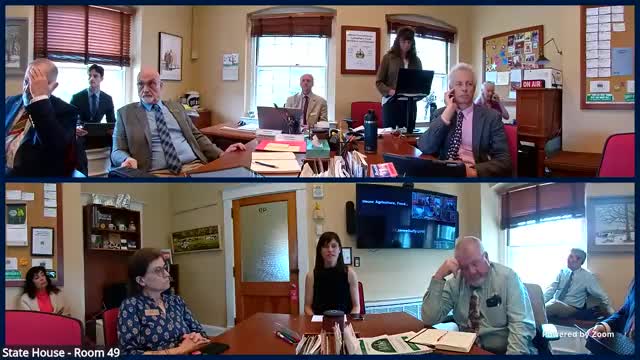Commissioner Fitsco proposes permanent rules for heavy cut forestry practices
May 30, 2025 | Agriculture, Food Resiliency, & Forestry, HOUSE OF REPRESENTATIVES, Committees, Legislative , Vermont
This article was created by AI summarizing key points discussed. AI makes mistakes, so for full details and context, please refer to the video of the full meeting. Please report any errors so we can fix them. Report an error »

In a recent meeting held in Vermont, members of the House Agriculture, Food Resiliency, and Forestry Committee gathered to discuss critical updates to agricultural practices and forestry regulations. The atmosphere was charged with a sense of urgency as representatives navigated complex issues that could significantly impact local farmers and land management.
One of the key topics was the proposed changes to donation regulations for agricultural products. Currently, farmers face a manual review process for donations, which can be cumbersome. A suggestion was made to streamline this process, allowing for a more straightforward judgment on whether a donation qualifies under a new $2,000 threshold. This change could facilitate farmers donating excess produce, such as hay, without the burden of extensive paperwork, thus promoting food resiliency in the community.
Representative O'Brien raised concerns about informal agreements between farmers, highlighting the need for clarity in how these donations would be categorized. The discussion underscored the importance of ensuring that farmers can contribute to food security without being hindered by bureaucratic obstacles.
Another significant point of discussion was the heavy cut legislation, which governs the removal of trees from forests. Commissioner Danielle Fitsco explained that the existing rules, established in 1997, have been effective but were at risk of being repealed due to a legislative oversight. The committee considered a proposal to officially publish these rules, ensuring that the permitting process for heavy cuts remains intact. This process is crucial for maintaining forest health and biodiversity, as it allows for careful management of land while supporting landowners' needs.
The committee's deliberations also touched on the implications of these regulations for landowners, particularly in light of past natural disasters that have necessitated heavy cuts for recovery. The conversation highlighted the balance between environmental stewardship and agricultural productivity, a theme that resonated throughout the meeting.
As the session concluded, the committee members expressed a commitment to refining these regulations, ensuring they serve both the agricultural community and the environment effectively. The discussions not only reflected the complexities of agricultural policy but also the shared goal of fostering a resilient food system in Vermont. The outcomes of this meeting could pave the way for more efficient practices that benefit farmers and the broader community alike.
One of the key topics was the proposed changes to donation regulations for agricultural products. Currently, farmers face a manual review process for donations, which can be cumbersome. A suggestion was made to streamline this process, allowing for a more straightforward judgment on whether a donation qualifies under a new $2,000 threshold. This change could facilitate farmers donating excess produce, such as hay, without the burden of extensive paperwork, thus promoting food resiliency in the community.
Representative O'Brien raised concerns about informal agreements between farmers, highlighting the need for clarity in how these donations would be categorized. The discussion underscored the importance of ensuring that farmers can contribute to food security without being hindered by bureaucratic obstacles.
Another significant point of discussion was the heavy cut legislation, which governs the removal of trees from forests. Commissioner Danielle Fitsco explained that the existing rules, established in 1997, have been effective but were at risk of being repealed due to a legislative oversight. The committee considered a proposal to officially publish these rules, ensuring that the permitting process for heavy cuts remains intact. This process is crucial for maintaining forest health and biodiversity, as it allows for careful management of land while supporting landowners' needs.
The committee's deliberations also touched on the implications of these regulations for landowners, particularly in light of past natural disasters that have necessitated heavy cuts for recovery. The conversation highlighted the balance between environmental stewardship and agricultural productivity, a theme that resonated throughout the meeting.
As the session concluded, the committee members expressed a commitment to refining these regulations, ensuring they serve both the agricultural community and the environment effectively. The discussions not only reflected the complexities of agricultural policy but also the shared goal of fostering a resilient food system in Vermont. The outcomes of this meeting could pave the way for more efficient practices that benefit farmers and the broader community alike.
View full meeting
This article is based on a recent meeting—watch the full video and explore the complete transcript for deeper insights into the discussion.
View full meeting